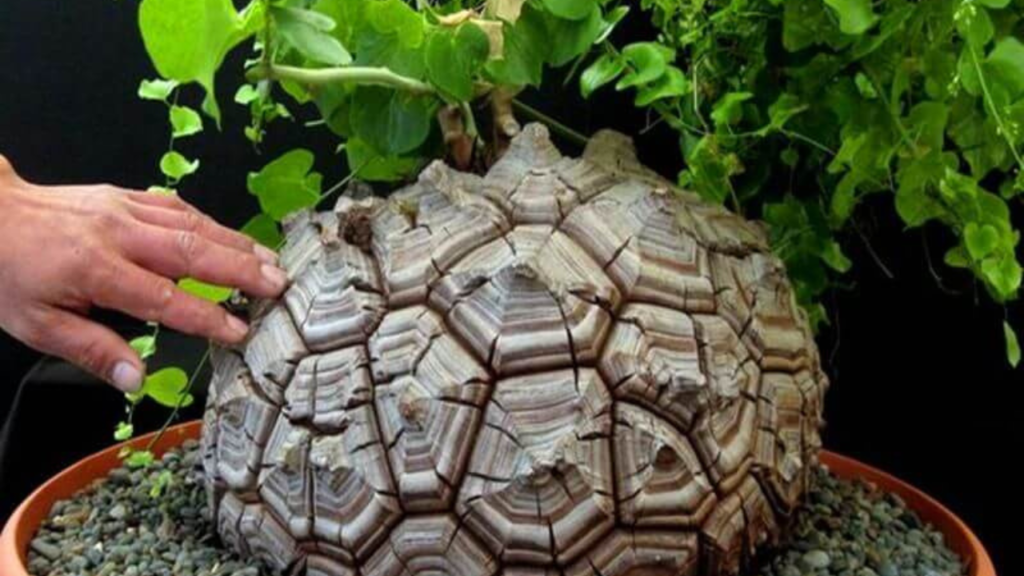
The world of succulents is bursting with diversity, but few plants capture hearts like the Dioscorea elephantipes, better known as the Elephant’s Foot Succulent. This quirky charmer boasts more than just a captivating name – it’s a survivor, a conversation starter, and a slow-burning beauty that will add a touch of the extraordinary to your plant collection.
A Caudex fit for a Giant:
Imagine a plant with a bulbous base resembling an elephant’s foot, growing up to 3 meters (10 feet) in circumference! That’s the Dioscorea elephantipes, its caudex (thickened stem base) taking center stage. This isn’t just a whimsical feature – it’s a water and nutrient reservoir, allowing the plant to thrive in its dry South African homeland. The caudex is covered in thick, corky plates, like armor protecting it from the harsh sun and heat.
A Survivor’s Tale of Elephant’s Foot Succulent:
But the Elephant’s Foot Succulent is more than just a pretty face. It’s a master of adaptation, perfectly suited to its arid environment. During scorching summers, it enters dormancy, shedding its leaves to conserve precious moisture. Come spring, it awakens with renewed vigor, sprouting vibrant green, heart-shaped leaves that climb on nearby structures. And while not as frequent, it might even surprise you with delicate greenish-yellow flowers, adding another layer of charm to its already captivating personality.
Why You Need This Quirky Charmer in Your Life:
- Unique appeal: The caudex steals the show with its elephant-foot-like shape and textured surface, making it a conversation starter in any room.
- Slow and steady growth: This low-maintenance plant is perfect for busy plant parents, requiring minimal fuss and attention.
- Drought tolerance: Forgetful waterers rejoice! This succulent thrives in dry conditions, making it ideal for those who lead busy lives.
- Fascinating dormancy: Witnessing its summer dormancy cycle adds an intriguing twist to its life cycle and sparks curiosity.
Caring for Your Elephantine Friend:
Keeping your Elephant’s Foot Succulent happy is easy! Here are some key tips:
- Potting mix: Choose well-draining soil to prevent root rot. Remember, underwatering is far better than overwatering!
- Watering: Let the soil dry completely between waterings.
- Light: Give it plenty of bright light for optimal growth and development.
- Fertilization: Go easy on the fertilizer. Too much can damage the caudex.
- Repotting: As the caudex grows, it will need a larger pot to accommodate its expanding girth.
Beyond the Basics:
Ready to delve deeper into the world of the Elephant’s Foot Succulent? Here are some additional points to explore:
- Propagation: Learn how to create new elephant’s foot succulents from leaf cuttings or root divisions.
- Toxicity: While not highly toxic, keep this plant out of reach of pets and children as ingesting any part can cause mild stomach upset.
- History and uses: Discover the fascinating history of the Elephant’s Foot Succulent and its traditional uses in various cultures.
From Quirky to Captivating:
The Dioscorea elephantipes is more than just a succulent – it’s an experience. Its slow growth allows you to witness its gradual transformation, adding to the sense of satisfaction and accomplishment. Plus, its quirky personality and conversation-starting looks are sure to make it a favorite among your plant collection.
So, why not bring a touch of whimsy and intrigue into your home with the Elephant’s Foot Succulent? This unique and resilient plant is sure to captivate you with its slow-burn charm and quirky personality. Get ready to embark on a journey of discovery as you watch your very own mini-elephant grow and thrive!
Happy planting!